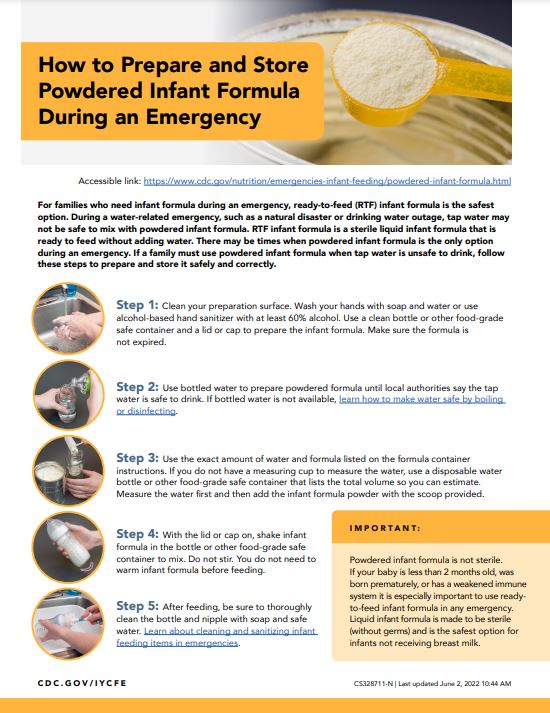How to Prepare and Store Powdered Infant Formula During an Emergency
For families who need infant formula during an emergency, ready-to-feed (RTF) infant formula is the safest option. During a water-related emergency, such as a natural disaster or drinking water outage, tap water may not be safe to mix with powdered infant formula. RTF infant formula is a sterile liquid infant formula that is ready to feed without adding water. There may be times when powdered infant formula is the only option during an emergency. If a family must use powdered infant formula when tap water is unsafe to drink, follow these steps to prepare and store it safely and correctly.
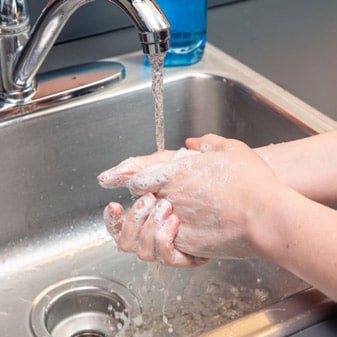
STEP 1
Clean your preparation surface. Wash your hands with soap and water or use alcohol-based hand sanitizer with at least 60% alcohol. Use a clean bottle or other food-grade safe container and a lid or cap to prepare the infant formula. Make sure the formula is not expired.
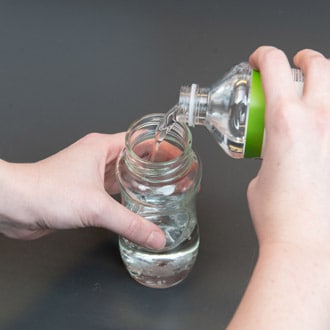
STEP 2
Use bottled water to prepare powdered formula until local authorities say the tap water is safe to drink. If bottled water is not available, learn how to make water safe by boiling or disinfecting [PDF-775KB].
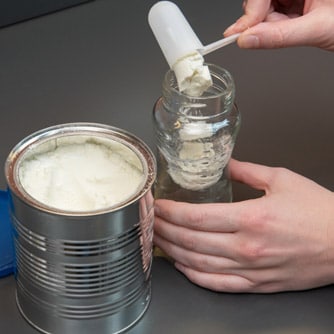
STEP 3
Use the exact amount of water and formula listed on the formula container instructions. If you do not have a measuring cup to measure the water, use a disposable water bottle or other food-grade safe container that lists the total volume so you can estimate. Measure the water first and then add the infant formula powder with the scoop provided.
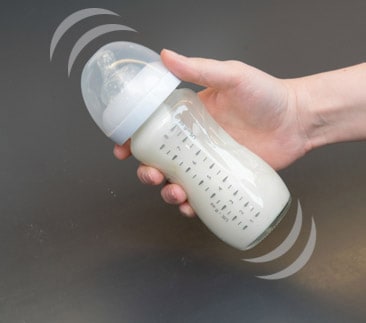
STEP 4
With the lid or cap on, shake infant formula in the bottle or other food-grade safe container to mix. Do not stir. You do not need to warm infant formula before feeding.
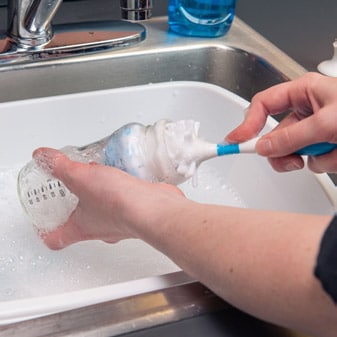
Step 5
After feeding, be sure to thoroughly clean the bottle and nipple with soap and safe water. Learn about cleaning and sanitizing infant feeding items in emergencies.
Powdered infant formula is not sterile. If your baby is less than 2 months old, was born prematurely, or has a weakened immune system it is especially important to use ready-to-feed infant formula in any emergency. Liquid infant formula is made to be sterile (without germs) and is the safest option for infants not receiving breast milk.
Use Quickly and Store Safely
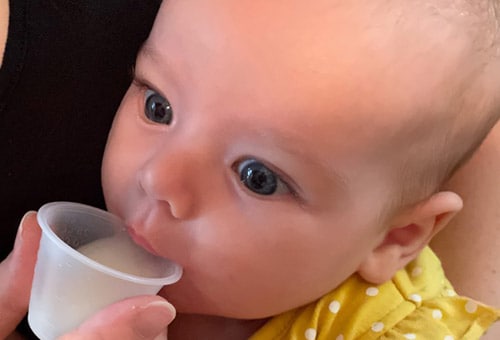
When safe water is not available, bottles and bottle nipples are dangerous to use in emergencies because they are difficult to clean. If you’re using a disposable water bottle or other food-grade safe container to prepare the formula, pour the formula into a disposable cup to feed your baby. After feeding, throw away the cup. Learn more about cup feeding [PDF-805KB].
- Use prepared infant formula within 1 hour from start of feeding and within 2 hours of preparation.
- If you are not going to use the prepared formula within 2 hours, immediately store it in the refrigerator and use within 24 hours.
- During power outages, you may not have access to a working refrigerator. In this case prepare a fresh formula feed for every feeding.
- Throw out any formula that’s left over after feeding your baby. Do not refrigerate it to save for later. The combination of infant formula and your baby’s saliva can cause bacteria to grow.
Feeding Tips
- If you feed your baby with both breast milk and powdered formula, breastfeed or feed your baby breast milk first, then feed the formula.
- Do not use a bottle to feed your baby anything besides infant formula or breast milk.
- When mixing infant formula, make only the amount your baby will eat in the bottle. This avoids wasting your supply.
- If you are using disposable cups, use a new cup for each feeding.
Remember
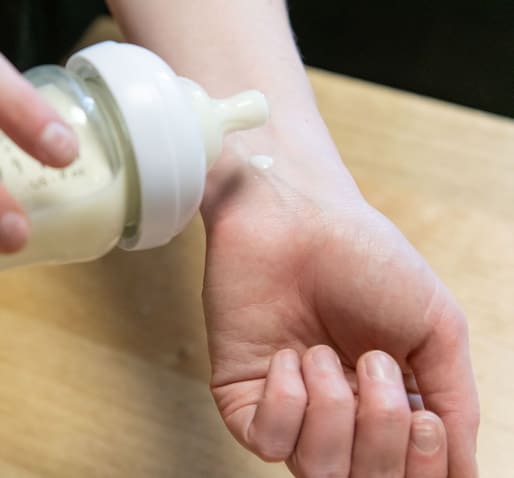
If you decide to warm the formula, and have access to clean water, place the closed bottle into a bowl of warm water for a few minutes. Avoid getting water into the bottle or nipple. This could contaminate the prepared formula. Test the temperature before feeding it to your baby by putting a few drops of formula on your wrist. It should feel warm, not hot.
Never warm formula in a microwave. Microwaving creates hot spots, which can burn your baby’s mouth.
- Always mix formula in a food-grade safe bottle or container. Never use a container that has ever held any toxic substance or chemical.
- Always use the exact amount of water and formula listed on the instructions of the infant formula container. Adding too much or too little formula can make your baby sick.
- Do not make or feed your baby homemade infant formula. Feeding homemade infant formula to your baby can lead to serious health problems for your baby.
- If formula cans were exposed to unsafe water, have dents, rust spots, puffy ends or a broken seal, they should be thrown away immediately.
- Keep powdered formula lids and scoops clean and dry, and close containers of formula as soon as possible. Store the scoop inside the container.
- Watch and listen for updates from local authorities regarding the safety of your water source.
